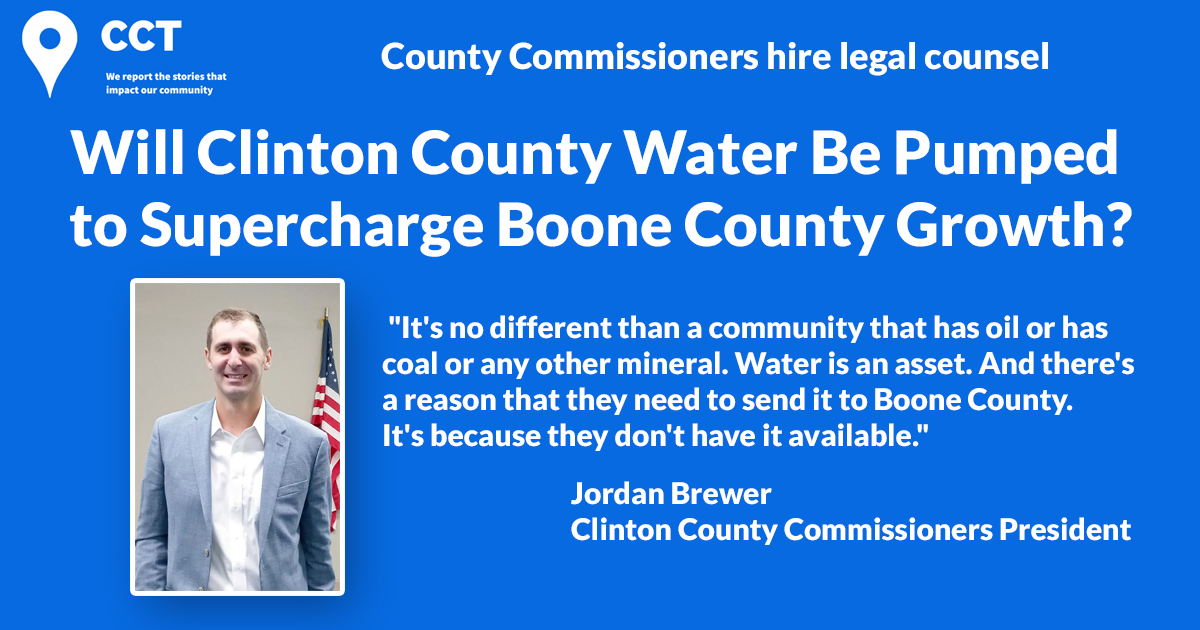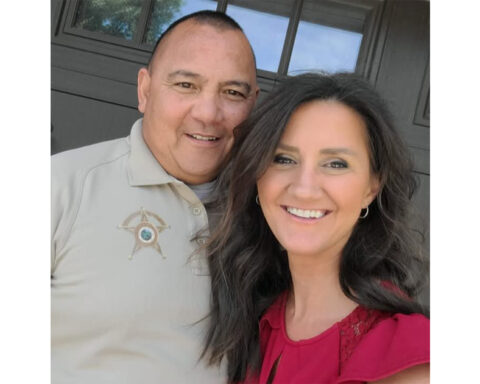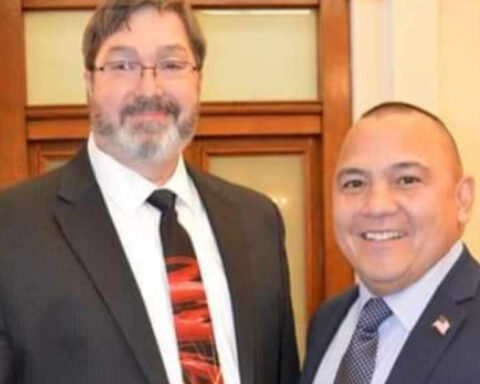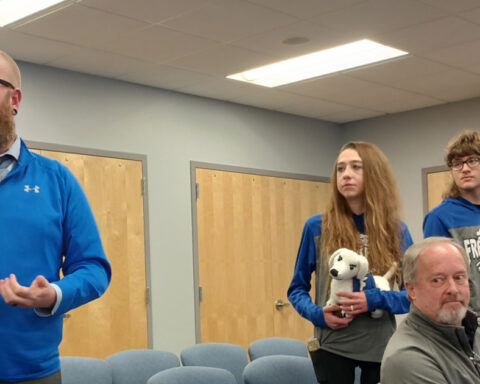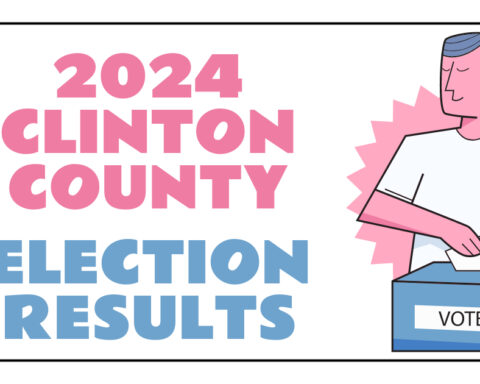CLINTON COUNTY, Ind. – As the State of Indiana aquifer study has quickly transformed from study phase to test drilling in a southwest portion of the county, the Clinton County Board of Commissioners approved the hiring of outside legal counsel at its July 18 meeting to understand and protect, if necessary, a county asset – underground water.
The area in question for the aquifer study and drilling is a corridor from State Road 28 to the north, south along 400 South with 200 West being the eastern point with the western boundary being west of Interstate 65.
Why seek legal representation?
The fast rate of progress in the study, the lack of communication from the State, and recent news of supercharged growth in Boone County were given as reasons by Commissioners President Jordan Brewer why the County felt necessary to hire an attorney – the same attorney that currently represents the Frankfort Utility Service Board, Clayton Miller of Indianapolis.
Addressing the Board and public during the July meeting, Commissioner Brewer stated, “we’ve continued to have updates but, just being transparent, that we get the information they [the State] want to tell us.”
After the meeting, the commissioner explained further how the study and now test drilling have evolved due to the growth and news south in Boone County of the planned development of a Limitless Exploration/Advanced Pace (LEAP) Innovation and Research District.
“It’s evolved from the aquifer study to the test drills that are ultimately looking to see what type of production. I think we can all piece together the puzzle that this is to flow south to Boone County for their four to 7,000 [acres] LEAP Innovation Park District,” explained Commissioner Brewer.
“So, we’ve got to the point in our discussions with the State, that we felt like we needed to seek some representation, that was specific to water, infrastructure needs and water rights. … So ultimately kind of get an understanding of, can the State come in and take water that’s sitting underground here in Clinton County and somehow say that it has to be directed elsewhere outside the county?”
How did Clinton County get to this point?
Both the County and City of Frankfort, via the Frankfort Utility Service Board, are participants in the aquifer study each contributing $250,000 towards a State Water Infrastructure Fund (SWIF) grant. The grant was awarded in March of this year – after previously being turned down by the Indiana Finance Authority (IFA) in early Fall of 2021, only to receive a request from the State to participate a few months later.
“So originally, last summer [2021] we were approached in doing an aquifer study, kind of [a] joint partnership between the City and the County, both contributing $250,000,” remarked Commissioner Brewer after the March 21, 2022 meeting. “The study was going to run 750,000 to a million dollar range. And, we were, like I said, we were approached about it so we felt really good about this grant application going through the IFA for this SWIF grant.”
“And then, we get the letter in September and [it] says, we didn’t get it and so we kind of thought, well, that it’s dead and obviously misled us a little bit in that direction. And out of nowhere, over the winter, it’s kind of re-emerged.”
The expansion of the aquifer project scope has swelled the project’s cost to nearly $5 million, while the contribution level has remained the same to the County and USB. An item noted by Commissioner Brewer in March when announcing the grant was awarded.
“It’s expanded,” remarked Commissioner Brewer. “It was capped at a million dollars in terms of the study. Now in doing this study and some potential well drilling to look at how much water there is in specific areas, they’re estimating that’s going to be three to $5 million project, and we’re still only required to put in the 250,000. So as I mentioned that essentially if it’s a $5 million, ends up being $5 million and we put 250 in and we’ve leveraged 250 for a 20 to one of that money. So that’s, that’s great utilization. I mean, you don’t get those odds in anything.”
What is the LEAP Innovation and Research District and where is it located?
The Indiana Economic Development Corporation (IEDC) identified the area in northwest Boone County as a strategic location for growth in the potential establishment of a large-scale research and Innovation Park according to a document presented to the Lebanon City Council during the discussion of annexation of the land area.
The area (see map below) is mostly rural and is situated between Indianapolis and Purdue University in West Lafayette. LEAP consumes 6,000 acres and is roughly bounded to the north by 450 N and to the south by State Road 32 with Interstate 65 bisecting the area leaving parcels to the east and west. As a comparison to the size of land, the Purdue University West Lafayette campus is approximately 2,500 acres. A portion of the Big 4 Trail that travels from Lebanon to Colfax is within the LEAP zone.
The IEDC has currently secured rights to purchase 6,000 acres with 1,500 acres – comprising 32 landowners – as part of the first-phase of LEAP development.
The City of Lebanon approved the first-phase of voluntary annexation for project LEAP at its July 11 meeting.
Lebanon Mayor, Matt Gentry, noted Boone County is the fastest growing county in Indiana during a June 6, 2022, appearance on Inside Indiana Business.
Indianapolis headquartered Eli Lilly recently announced plans to acquire approximately 600 acres of LEAP property from the IEDC for the purpose of developing, constructing and operating a research and Manufacturing campus containing multiple buildings and substantial Green Space. Lilly intends to make an initial capital investment of over $2 Billion on the site, not including the cost of the land itself. They are the first publicly announced participant of the first-phase of LEAP.
Protecting the residents of Clinton County
“So ultimately we’re trying to protect Clinton County residents and taxpayers from what we believe is an asset,” concluded Commissioner Brewer. “It’s no different than a community that has oil or has coal or any other mineral. Water is an asset. And there’s a reason that they need to send it to Boone County. It’s because they don’t have it available.”
“And so rather than allowing someone to come in here and take that asset and we receive no compensation or no benefit for the growth of our community, we felt like we needed some legal representation that knew the laws and statutes of that specific industry to protect us and help us out.”
Map of LEAP Innovation and Research District


